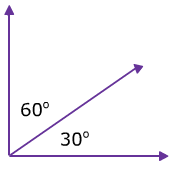

Overall, the article refers to the history of the Geometric Abstract Art Movement. The article that I found touches on angles but I feel like you could use in throughout the entire unit and just touch on in during every topic you cover. How has this topic appeared in high culture? The game on the website is very straight forward with the students so you can count on it not causing any misconceptions. Everyone is competitive so why not channel that into learning. I also think that anytime you can put something into a game format, students will try harder. Once you can get the students to see it and immediately identify it, they can then transition into finding the specific degrees. I really like this game because our students need to develop that muscle memory of seeing an angle and knowing whether it is a complementary, supplementary or vertical set. The website that I found uses a game to get kids identify the missing angle in degrees and each angle is either complementary, supplementary or vertical. With this type of topic, the main thing that you want your students to remember is vocabulary. I found this website that is an interactive game that students can play when learning about this topic. How can technology (YouTube, Khan Academy, Vi Hart, Geometers Sketchpad, graphing calculators, etc.) be used to effectively engage students with this topic? His topic, from Geometry: defining the terms complementary angles, supplementary angles, and vertical angles. This student submission comes from my former student Mason Maynard. I plan to share some of the best of these ideas on this blog (after asking my students’ permission, of course). Instead, I asked my students to think about three different ways of getting their students interested in the topic in the first place.

In other words, the point of the assignment was not to devise a full-blown lesson plan on this topic. In my capstone class for future secondary math teachers, I ask my students to come up with ideas for engaging their students with different topics in the secondary mathematics curriculum.


 0 kommentar(er)
0 kommentar(er)
